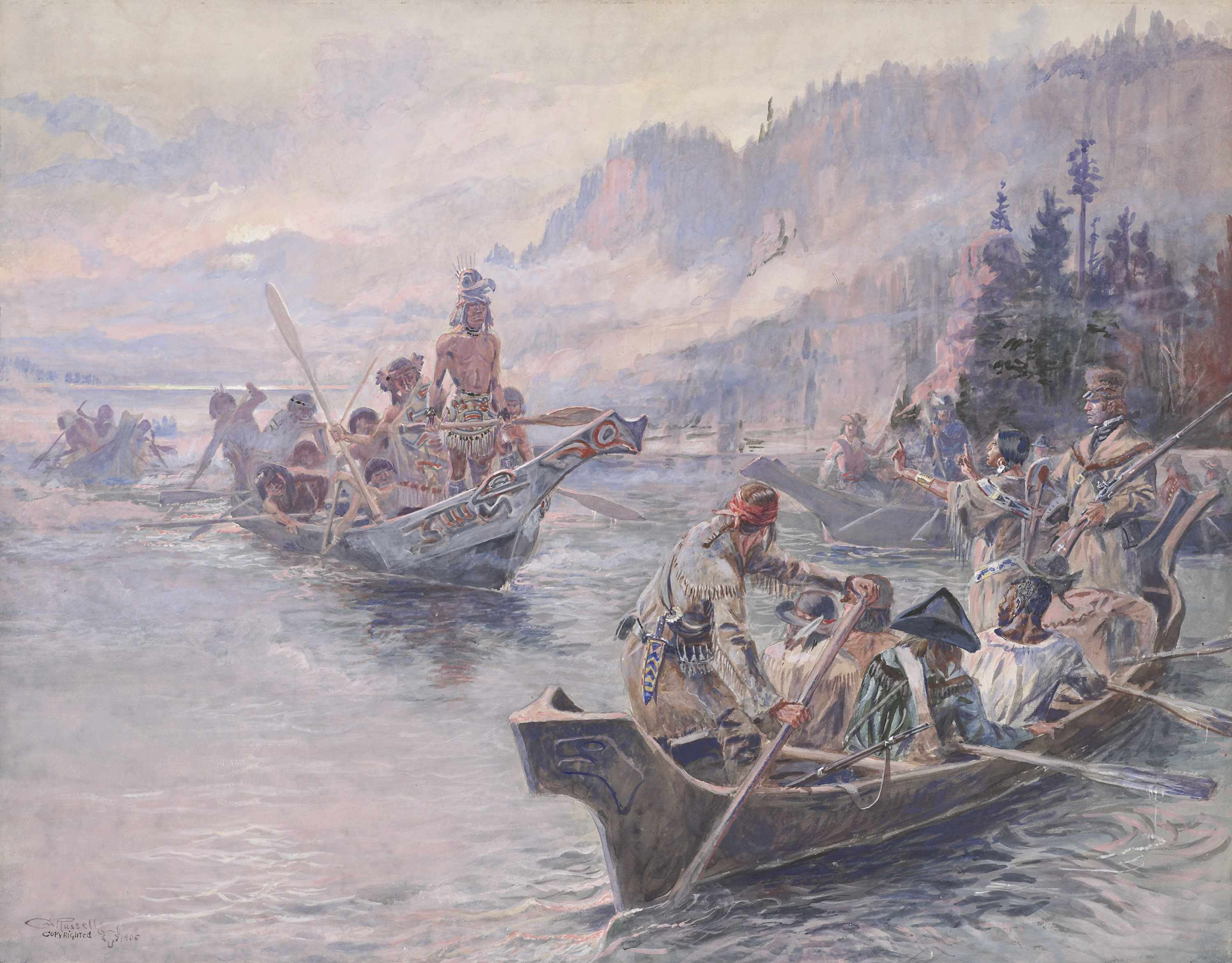Yesterday’s excellent piece by my fellow Chef Lettie Conrad reflected on a recent OUP study on reference resources. Lettie concluded that the reference category is “ripe for disruption, perhaps even overripe.” I agree with her. Today, I want to explore some of the specific forms that this disruption seems to be taking.
Scholarly publishers have long thought in categories such as journals, monographs, textbooks, and reference. Each of these categories is in flux. As the primary vehicles for the dissemination of original research, journals and monographs are slowly coming together on content platforms and in editorial focus, with attendant shifts in distribution and pricing. Textbooks are facing up to their emerging role in the transition to interactive online and hybrid learning. In both cases, network forces and open models are raising substantial questions about the exact role of the publisher and the value added.
By contrast, reference as a category is splitting in two. And, each of the two halves are recombining with other tools and services. In this transformation, we need to understand reference as infrastructure and workflow as much as publication.

The Split
Ultimately, what scholarly publishers and academic libraries would have categorized as reference has split into two discrete areas. First, there is factual information, such as that found in dictionaries, gazetteers, concordances, almanacs and the like, whose content is no longer typically accessed through standalone publications but increasingly as part of the ambient research environments we utilize online. The facts themselves are if anything more important than ever, but the access mechanism is decreasingly likely to be a standalone publication. Instead, facts are being integrated into exploratory, analytical, and authoring environments, often through various licensing arrangements: for example, mapping services, operating systems, search engines, and word processors, each may integrate some of these factual functions.
The second direction of what we once saw as reference consists of exploratory resources, tools like encyclopedias and bibliographies that allow a researcher to learn about a subject area or field of study and then deepen their learning through a curated set of potential further readings and other content types. These tools are often especially valuable to students learning more about a field, but they may be equally valuable as more scholars cross disciplinary lines and seek guidance to familiarize themselves with unfamiliar territory. Exploratory resources are being redefined at the intersection between content and discovery, and there are interesting new opportunities in this category as it becomes more defined.
Exploratory resources
Critically, the emerging category of exploratory resources is broader than just a subset of reference publications. This subset of reference is bumping up against and seems to be combining with a series of other kinds of tools. Reflecting Joe Esposito’s useful typology, some exploratory resources may be reference products but others are the features of content platforms, library websites, and discovery services, among others. Put another way, the nature of the competition is not just product to product.
An overview of some specific exploratory resources helps to define the category:
- The research guides created by academic librarians that provide subject- and course-specific information especially for students at their institution. Popularly known as LibGuides for a widely-used platform that supports these guides, libraries generally make these resources freely available online. Research guides are a tangible mechanism by which libraries deliver their librarians’ subject expertise. The downside of this approach is that hundreds of libraries attempt to create their own research guides for identical or similar topics, sometimes improving or localizing peer versions, rather than scaling up to create a shared community resource.
- JSTOR Topic Pages, a relatively new feature to draw together links to all JSTOR materials falling into a thesaurus-created subject area. Appropriate overview information from Wikipedia is provided for each topic area. The downside of this approach is that the links are limited to content available through JSTOR. (Full disclosure: JSTOR is operated by the same parent organization of Ithaka S+R, for which I work.)
- Oxford Bibliographies, an online service licensed through libraries which provides expert overviews of key subject areas and provide curated lists of appropriate materials from across publishers and providers for further study. This model, curated by experts, would seem to offer the most canonical approach.
- Credo Reference, which organizes a variety of reference resources from multiple publishers by subject area and specific topics, while also providing tools to support student information literacy development.
- YewNo Discover, an academic discovery service built around topic modeling which has extensive support for understanding topics in part by exploring how they connect to related areas of learning. Its strong visualization tools have raised questions about whether it is a complement or a competitor for the discovery services that have swept the academic library market over the past five years.
This is by no means an exhaustive list of the terrain, but it affords some sense of the complexity of the category. Each of these exploratory resources provides a mechanism for an individual interested in a given topic area to begin at a relatively novice level while finding opportunities to gain greater specificity as their interests carry them. Given the many options available among exploratory features and products, the environment is competitive.
Exploration is discovery
Many readers of the Kitchen likely think of these exploratory resources first of all as a type of publication. Many classes of exploratory resources require substantial editorial investment from subject matter experts. Even some of those that may be seen as substantially algorithmic actually have curatorial or metadata labor underlying them. But exploratory resources in the expansive way I have defined them are not just editorial products. They are equally, or perhaps moreso, a subset of discovery services.
Of course the array of resources and tools that provides discovery is vast. Every content platform had at least some discovery tools of its own: a search engine, a hierarchy for browsing journals or books by their subject areas, or as in one of the examples above topic modeling that is generated at a more granular article or chapter level. And there are many products in the discovery category: A&I tools and citation databases, as well as the relatively newly introduced “index based” or “webscale” discovery tools, which started out more as search services while gradually introducing new types of discovery features based on the advantages of having built huge content indices.
Exploratory resources offer another mechanism for discovering scholarly content. In one sense, they actually compete with other types of discovery services. After all, they share a common interest in serving as a sort of “switch” if not actually a starting point for gathering up users and sending them along to appropriate content destinations.
So, examining how each of these exploratory resources fits into the discovery landscape, or will do so over time, is vital. Do they assume a presence on the library homepage? A flow of traffic from Google Scholar and similar resources? That they will be recognized as a brand-name starting point for exploration? These questions matter in some sense more for exploratory resources than for scholarly publications, since the latter are integrated into literature reviews, citation networks, and current awareness services in ways not available to exploratory resources.
What’s next?
Of course there have long been exploratory resources. But defining this as a content type, as apart from reference more broadly, can help us to assess some of the questions that reference publishers and others creating exploratory resources may wish to consider:
- In what circumstances should a publisher have a platform dedicated to reference products and in particular to exploratory resources? And, with respect to exploratory resources, how if at all does that connect to the biggest exploratory resource of all, Wikipedia?
- Alternatively (or additionally), how should these resources be integrated into content platforms and search-based discovery tools? What new business models might deeper integrations like this permit?
- What is the benefit of institutionally-organized or even course-specific exploratory resources (ie research guides)? How do they connect to textbook publishing and online/hybrid learning? How might they relate to other types of exploratory resources?
Getting to the heart of the matter, the underlying question is this: Where is subject and topical expertise found and how is it best translated and organized to support those exploring a new field?
I thank Lettie Conrad, David Crotty, Joe Esposito, Alex Humphreys, and Kimberly Lutz for comments and suggestions on drafts of this piece.
Discussion
11 Thoughts on "Defining a New Content Type: The Exploratory Resource"
This is a great discussion to have and a valuable one, but I’m not completely satisfied with the breakdown. Libguides is a tool through which human experts can present curated information. YewNo is, for me, more like an A&I tool, but just with machine indexing and natural language processing (relying to some extent on things that have had human curators for knowledge of the world). On the other hand, the bibliographies, the “reference modules” (Elsevier), and the “methods map” (Sage) – libraries are buying the structuring of content as well as the content.
There are definitely a variety of subcategories across the resources and services that you and I have each mentioned. I think there is value in understanding them, at least in part, as components of a single broader category. Yes, some are curated and some algorithmic, but even many of the latter have human metadata expertise underneath them. And yes, some are provided by library employees, some by library product licensing, and some as features of a library-licensed product. But ultimately the members of the category I am suggesting worthy of definition are all about providing subject or topic expertise to help relatively unfamiliar users explore a new area. Would you see an alternative kind of categorization?
It seems to me that most of that which is being discussed is in many ways rather static and not too dynamic.
How about taking something like the math section of the Handbook of Chemistry and Physics (a million copy seller) and tying all those formulas to programs that can solve equations. Or taking West Law and providing reference and open access to scientific and social science articles that support or have bearing on a case. Tying the medical literature to protocols in order to help the clinician both diagnose and prescribe.
In short, let’s get rid of the silos!
Regarding “scaling up to create a shared community resource” of LibGuides, it’s worth pointing out that the LibGuides platform does in fact allow sharing of guides across institutions. As far as I can tell, this option is not available at my institution—perhaps because it costs more to pay for that feature or because the administrator has disabled that option. I’ve thought about investigating, but to be honest, I wouldn’t want to use someone else’s guide wholesale anyway: they often include information specific to their institution. While the platform lets you include a part of a guide rather than the whole thing, I would only want to include something if I knew who else was going to have authority to update that chunk of content.
In case it helps … I think it depends what you mean by sharing (which may or may not be what Roger means by scaling) … As far as I know, using a guide made elsewhere as the basis of a new one is a basic feature of LibGuides. I think it’s been there since almost the beginning though it’s hard to remember exactly what it was like in 2007 (Illinois was one of their earliest large academic library customers). Embedding content from someone else’s guide (that they then continue to update) is possible within your institution’s instance but not across instances. If you use, for example, a guide from Illinois (community.libguides.com), it copies to your system and then it’s yours to edit, update, etc. For truly collaboratively developed guides, co-authored by people at different institutions, it’s possible by editing on one instance but “publishing” them to both sets of users involves a manual process to get them to both institutions’ instances. Perhaps more than anyone really wants to know. 🙂 But, since I spend a lot of time overseeing our LibGuides management (continuous asset oversight challenges and authorization to e-resources challenges, anyone?), I thought it might be useful information.
Thanks for the clarification. I had indeed been trying to embed content from someone else’s guide and, as you say, am only able to do so within my institution. Maybe I should have tried starting with someone else’s guide.
I’ve been wondering about an additional function that reference books had early in my career and whether anyone sees them that way any longer … which is as an “authoritative” source as a touch point to document the “truth” of something. We can all recall the story of the genesis of the Guinness Book of World Records, as a popular example. I’m thinking of all the times that words would be verified in the OED as another example. This seems distinct from the exploratory function (which I’ve really enjoyed thinking about today after reading this posting) and perhaps one that would be useful to reconsider in light of the work librarians are engaged with as we grapple with misinformation, cognitive bias, etc. that are prominent in our cultural discourse right now. It is possible as well, I admit, that I’m only adding nuance to your factual category but thinking about the functionality of the factual. Thanks for this thought-provoking essay!
In some ways, I took the easy way out by focusing the bulk of this piece on the exploratory category. The factual category is perhaps more challenged, because many factual resources, as they become embedded and ambient, valuable though they surely are, may not be sustainable. And as you point out, due to misinformation, bias, and other factors today, zeroing in on “truth” is a vital pursuit.
I really like the concept of exploratory resources as a new emerging form of reference, but I wonder if it’s more productive to split reference into three types not two.
Reference supports the beginning stages of a research journey in three ways: when one needs to check a fact, or gain a basic understanding of an unfamiliar topic, or find reliable primary research for further reading.
As described, exploratory resources address the latter two use cases, but smart, curated discovery tools like LibGuides, YewNo, Oxford Bibliographies, or JSTOR Topic Pages by themselves won’t give a researcher a basic understanding of a topic: they provide a shortcut to other reliable sources which then in turn can provide a lay of the land.
I would argue that forms of scholarly synthesis such as review essays or encyclopedic overviews should comprise their own distinct category. This form of content represents a convenient distillation of expert knowledge. Examples are Stanford Encyclopedia of Philosophy, Annual Reviews, or Grove Music.
There’s really no point in getting a world class expert to write a fact-based piece of content. Facts are easily verified. What subject experts can do, in addition to guiding a novice to the best sources, is provide an explanation of complex areas of scholarship. Drawing out this distinction, I think, can help us understand how reference, as a way of communicating expertise, will evolve.
Hi Damon, Thanks for your engagement here, given your leadership in this arena. I see why you would suggest splitting this category of exploratory resources into two, and you may be right that for some purposes this would make sense. But is it really all that different for someone to seek a well-referenced overview of a field and for them to be looking for a shortcut to reliable sources in that field? I understand why they might be seen to be discrete in the sense of how they would be created, but I suspect that on the user side, for a growing share of use cases, they are really one and the same.
Thanks Roger! I do think gathering a list of reliable sources is an irreducibly different research activity (or stage) than dipping into one of those sources to gain an understanding of that topic. It’s the difference between your professor handing you a reading list or delivering a lecture. The fact that the lecture/overview can also be used to point you to other sources doesn’t negate it’s explanatory value (use?).


